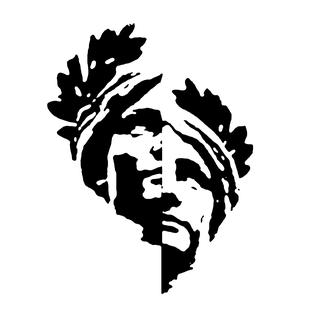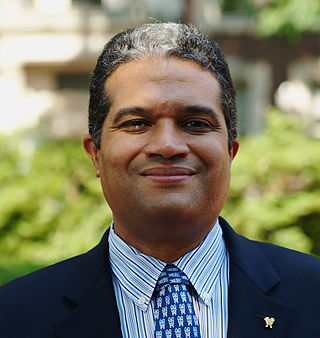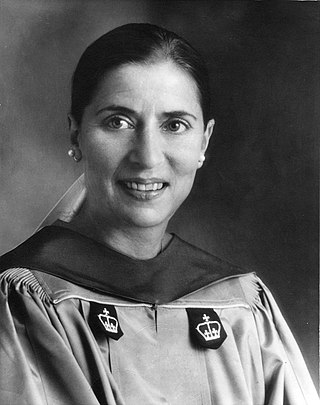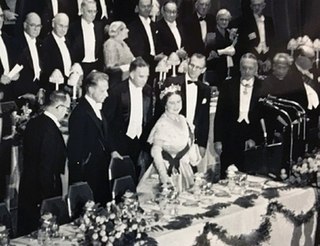
Barnard College, officially titled as Barnard College, Columbia University, is a private women's liberal arts college in the borough of Manhattan in New York City. It was founded in 1889 by a group of women led by young student activist Annie Nathan Meyer, who petitioned Columbia University's trustees to create an affiliated college named after Columbia's then-recently deceased 10th president, Frederick A.P. Barnard. The college is one of the original Seven Sisters—seven liberal arts colleges in the Northeastern United States that were historically women's colleges.

Columbia University, officially Columbia University in the City of New York, is a private Ivy League research university in New York City, United States. Established in 1754 as King's College on the grounds of Trinity Church in Manhattan, it is the oldest institution of higher education in New York and the fifth-oldest in the United States.

The Ivy League is an American collegiate athletic conference of eight private research universities in the Northeastern United States. The term Ivy League is used more broadly to refer to the eight schools that belong to the league, which are globally-renowned as elite colleges associated with academic excellence, highly selective admissions, and social elitism. The term was used as early as 1933, and it became official in 1954 following the formation of the Ivy League athletic conference.

The School of General Studies, Columbia University (GS) is a liberal arts college and one of the undergraduate colleges of Columbia University, situated on the university's main campus in Morningside Heights, New York City. GS is known primarily for its traditional B.A. program for non-traditional students. GS students make up almost 30% of the Columbia undergraduate population.
Columbia University in New York City has an extensive tunnel system underneath its Morningside Heights campus connecting many of its buildings, used by the university as conduits for steam, electricity, telecommunications, and other infrastructure. Throughout their history, the tunnels have also been used for other purposes, mostly centering around transportation. During the first half of the 20th century, they were used by students to avoid aboveground traffic. When the university housed the Manhattan Project, they were allegedly used to move radioactive material between buildings. During the Columbia University protests of 1968, students used the tunnels to facilitate their occupation of buildings on campus.

The Order of Angell, known for decades as Michigamua, was a senior honorary society recognizing student leaders and outstanding athletes at the University of Michigan. For most of its history, its practices reflected images of Native Americans drawn from Euro-American popular culture. From Michigamua's founding in 1901 until the 1970s, membership was a badge of distinction. From the 1970s on, the society drew rising criticism for admitting only men; for the form of cultural appropriation known as "playing Indian;" and for possessing Native American artifacts.

Delta Phi (ΔΦ) is a fraternal society established in Schenectady, New York on November 17, 1827. Its first chapter was founded at Union College, and was the third and final member of the Union Triad. In 1879, William Raimond Baird's American College Fraternities characterized the fraternity's membership as being largely drawn from the old knickerbocker families of New York and New Jersey. Today, the fraternity consists of ten active chapters along the East Coast of the United States, and also uses the names "St. Elmo," "St. Elmo Hall," or merely "Elmo" for its relation to Erasmus of Formia, the patron saint of sailors, and the Knights of Malta.

Alpha Kappa Lambda (ΑΚΛ), commonly known as AKL or Alpha Kapp, is an American collegiate social fraternity founded at the University of California, Berkeley, in 1914. Today, it operates 25 active chapters and has approximately 28,000 living-initiated members.

The Varsity Show is one of the oldest traditions at Columbia University. Founded in 1893 as a fundraiser for the university's fledgling athletic teams, the Varsity Show now draws together the entire Columbia undergraduate community for a series of performances every April. Dedicated to producing a unique full-length musical that skewers and satirizes many dubious aspects of life at Columbia, the Varsity Show is written and performed exclusively by university undergraduates. Various renowned playwrights, composers, authors, directors, and actors have contributed to the Varsity Show, either as writers or performers, while students at Columbia, including Richard Rodgers, Oscar Hammerstein II, Lorenz Hart, Herman J. Mankiewicz, I. A. L. Diamond, Herman Wouk, Greta Gerwig, and Kate McKinnon.
Secret societies have been a part of University of Virginia student life since the first class of students in 1825. While the number of societies peaked during the 75 years between 1875 and 1950, there are several newer societies and six societies that have been active for more than 100 years, including Seven Society, Z Society, IMP Society, Eli Banana, T.I.L.K.A. Society, and The 13 Society. The earliest societies, Eli Banana and T.I.L.K.A. Society, function as social clubs, while the Z Society, IMP Society, and Seven Society have a record of philanthropy and contribution to the university. Some of the more recent societies focus on the recognition or disapprobation of positive and negative contributions to the university.
The Columbia Daily Spectator is the student newspaper of Columbia University. Founded in 1877, it is the second oldest continuously operating college news daily in the nation after The Harvard Crimson, and has been legally independent from the university since 1962. It is published at 120th Street and Claremont Avenue in New York City. During the academic term, it is published online Sunday through Thursday and printed twice monthly. In addition to serving as a campus newspaper, the Spectator also reports the latest news of the surrounding Morningside Heights community. The paper is delivered to over 150 locations throughout the Morningside Heights neighborhood.
There are many collegiate secret societies in North America. They vary greatly in their level of secrecy and the degree of independence from their universities. A collegiate secret society makes a significant effort to keep affairs, membership rolls, signs of recognition, initiation, or other aspects secret from the public.

Robert Elliot Pollack is an American academic, administrator, biologist, and philosopher, who served as a long-time Professor of Biological Sciences at Columbia University.

Columbia University has developed many traditions over its 270-year-long existence, most of them associated with its oldest undergraduate division, Columbia College.

The Red Dragon Society is a secret society based at New York University, in New York, New York. The Red Dragon has long held the title to the most selective society at NYU, and has been known for its secrecy since its founding in 1898.
Henry Simmons Coleman was an American educational administrator who was serving as acting dean of Columbia College, Columbia University when he was held hostage in an office for a day by the Students for a Democratic Society during the Columbia University protests of 1968 and later wrote letters of recommendation to law school for some of the students involved in the protests. In 1972, he was shot five times by a disgruntled student who had been asked to withdraw from the university due to poor grades.

Feniosky Peña-Mora is a Dominican-born engineer, educator, and former commissioner of the New York City Department of Design and Construction. He also served as the 14th Dean of Columbia University's Fu Foundation School of Engineering and Applied Science and as the Associate Provost of the University of Illinois at Urbana–Champaign.

The academic regalia of Columbia University are the robes, gowns, and hoods which are prescribed by the university for its graduates. As one of the oldest universities in the United States, Columbia University has a long tradition of academic dress dating back to its founding in the 18th century, when it became the second university in the country to formally adopt academic robes. The development of Columbia's academic regalia has strongly influenced those of most universities in the United States. Since the passing of the Intercollegiate Code of Academic Costume in 1895, the style of academic dress worn at the university in the late 20th century has served as the basis of those of most other universities in the country. Though once worn daily by students at the university, caps and gowns now are only worn during commencement.

Roar-ee the Lion is the current incarnation of the Columbia Lion, the official mascot of Columbia University and the Columbia Lions. Already a long established symbol of the university, it was first adopted as the university's mascot in 1910 under the name "Leo Columbiae", and was renamed Roar-ee the Lion in 2005. Throughout its history, the Lion has been represented by live specimens on several occasions, including the 1934 Rose Bowl and a 1963 football game against Princeton. During the early 20th century, Matilda the Harlem Goat was an unofficial mascot for the university. Barnard College possesses its own mascot, the Barnard Bear.

The Columbia University Bicentennial was a series of celebrations in 1954 commemorating the 200th anniversary of the founding of Columbia University. Its scale was global, with participation from over 750 domestic and 350 foreign universities, libraries, and museums. In New York City, bicentennial events centered around three convocations in January, June, and October, interspersed with conferences, concerts, and other ceremonies. In order to spread the theme of the Bicentennial, "Man's Right to Knowledge and the Free Use Thereof", across the United States, the university created several network television and radio shows, including the Peabody Award-winning series Man's Right to Knowledge. The celebrations received heavy media coverage, both in the United States and abroad.

















